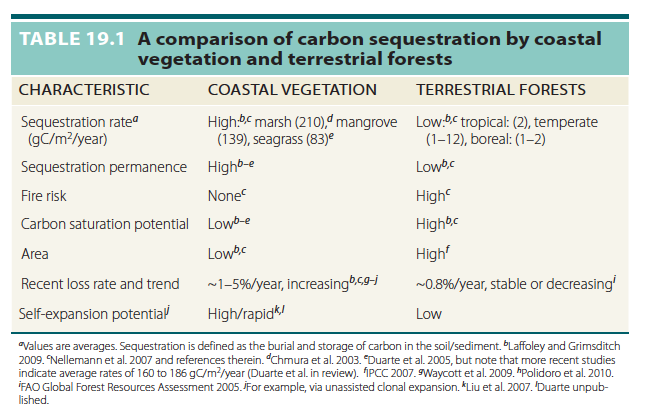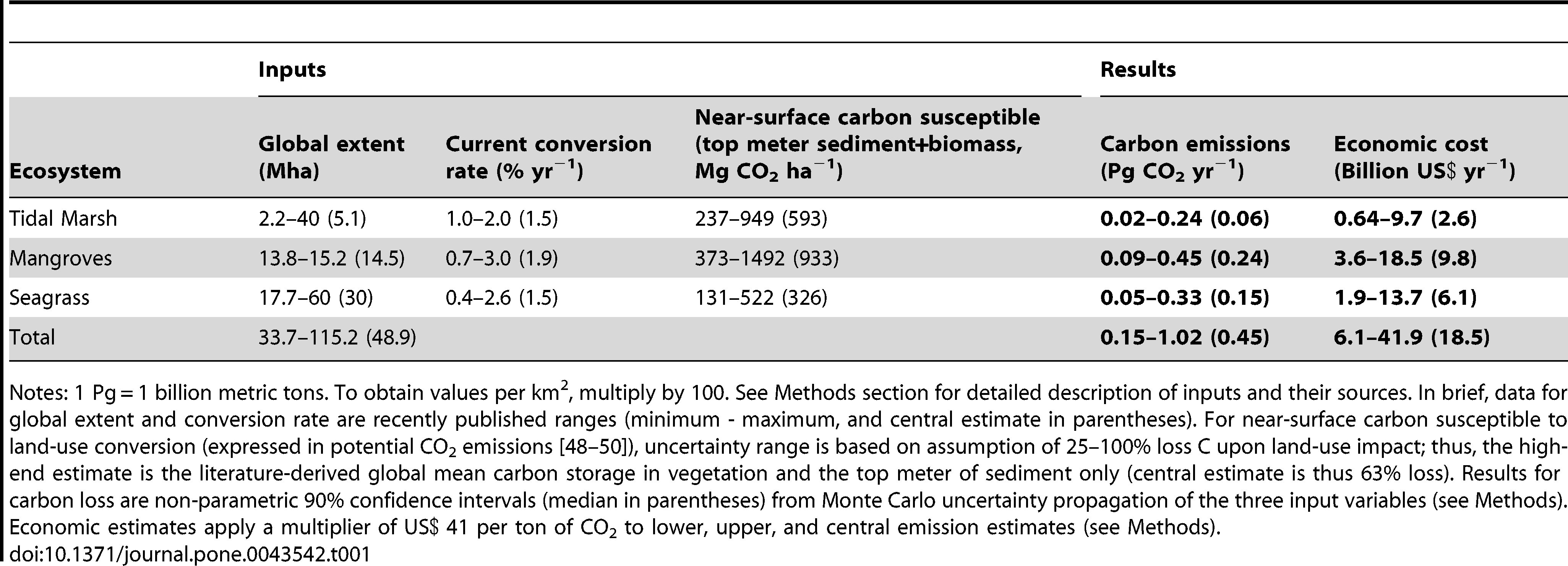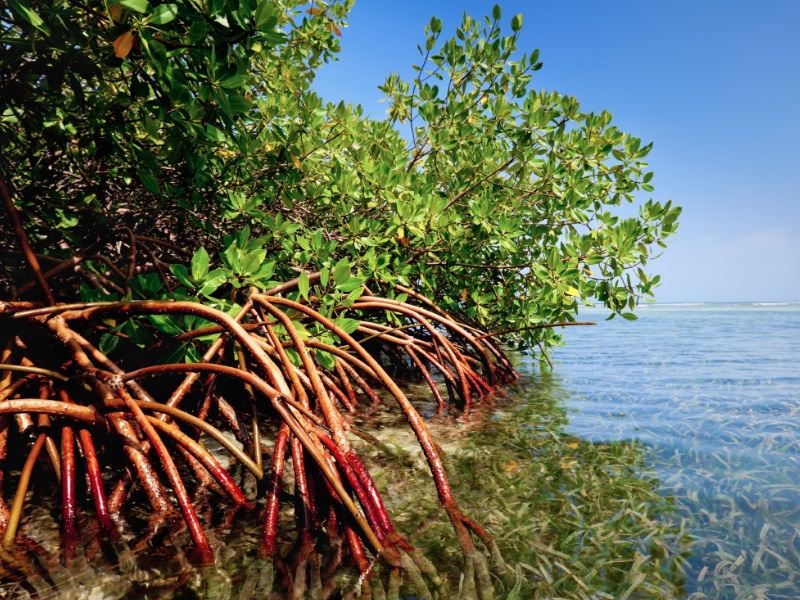This is the 7th installment of my serialization of a new book chapter on “Climate Change and Marine Communities” written with Chris Harley and Mike Burrows. It is for a new book “Marine Community Ecology and Conservation” that I’m co-editing with Mark Bertness, Brian Silliman, and Jay Stachowicz.
Blue Carbon
To avoid long-term ecological degradation, it is becoming clear that we need to reduce our emissions – immediately and radically – and develop policies and technologies to remove already-emitted greenhouse gases. One new approach is to sequester atmospheric CO2 by conserving and restoring mangroves, salt marshes, and seagrasses. Such coastal vegetation, dubbed “blue carbon” (AKA “coastal carbon”) covers a relatively small proportion of the earth but has a disproportionately large effect on the global carbon cycle (Duarte et al. 2005 PDF) because it sequesters carbon at a far greater rate (~ 50-100x) and more permanently than terrestrial forests (Laffoley and Grimsditch 2009).
Organic carbon is stored in peat below coastal vegetation habitats as they accrete vertically. Because the sediment beneath these habitats is typically anoxic, a lower fraction of the organic carbon is broken down and released by microbes, compared to a terrestrial forest. Coastal vegetation also continues to sequester carbon for thousands of years in contrast to forest, where soils can become carbon-saturated relatively quickly. Additionally, unlike freshwater wetlands and bogs, marine wetlands release very little methane.
Additionally, coastal vegetation can spread rapidly via clonal propagation. This greatly magnifies the value of a conservation investment in blue carbon over time. For example, small plots of the marsh grass Spartina alterniflora introduced to the Jiangsu Province of China in 1982 expanded 1875x by 2004 and sequestered an estimated 83 million kg of organic carbon (Liu et al. 2007). The rate of loss of all three primary blue carbon habitats is breathtaking: salt marshes have been buried for development for centuries (Bromberg and Bertness 2005, Gedan et al. 2009) and in just the last several decades, we have lost at least a third of the world’s mangrove forests for charcoal and for shrimp farming and other agricultural purposes (Polidoro et al. 2010). The annual loss of seagrass beds is estimated at 1.5% (Orth et al. 2006, Waycott et al. 2009). When blue carbon habitats are destroyed we lose their sequestration function and conversely when we restore these habitats, we restore this function. However, the far greater concern is the release of enormous quantities of carbon due to some forms of “conversion ”, i.e., from a natural state to a shrimp farm or a parking lot. For example, when the surface vegetation is removed from mangrove forests or salt marshes for development, the carbon rich soil can be aerated. This can lead to the release of carbon that has been locked up for centuries or millennia. Pendleton et al. (2012) estimated that this leads to up to one billion tons of carbon annual emissions or roughly 20% of carbon emissions from deforestation. Enhanced erosion caused by rising sea level could have a similar effect. Likewise, Fourqurean et al. (2012) estimated that 63 to 297 Tg of carbon is released annually from seagrass bed degradation when organic carbon stored in seagrass soils are oxidized.
However, the far greater concern is the release of enormous quantities of carbon due to some forms of “conversion ”, i.e., from a natural state to a shrimp farm or a parking lot. For example, when the surface vegetation is removed from mangrove forests or salt marshes for development, the carbon rich soil can be aerated. This can lead to the release of carbon that has been locked up for centuries or millennia. Pendleton et al. (2012) estimated that this leads to up to one billion tons of carbon annual emissions or roughly 20% of carbon emissions from deforestation. Enhanced erosion caused by rising sea level could have a similar effect. Likewise, Fourqurean et al. (2012) estimated that 63 to 297 Tg of carbon is released annually from seagrass bed degradation when organic carbon stored in seagrass soils are oxidized.
 Table 1 from Pendleton et al. (2012).
Table 1 from Pendleton et al. (2012).
A nice video about Blue Carbon from Sherman’s Lagoon cartoonist Jim Toomey:
[youtube]http://www.youtube.com/watch?v=4fNW8spFS_o&[/youtube]
Go here for more blue carbon information and resources.
The literature Cited for the entire chapter is here as a PDF

Leave a Reply